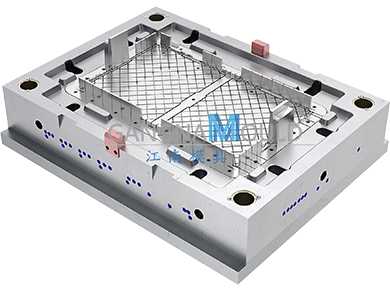How to improve mold processing accuracy?
Improving mold machining accuracy is crucial for ensuring mold quality, extending service life, and guaranteeing product consistency. Below is a systematic approach to achieving higher precision:
1. Optimize Design and Process Planning
◆ Rational Tolerance Design:
- Assign critical dimensional tolerances based on product requirements (e.g., ±0.005mm for cavities/cores, ±0.02mm for non-critical areas).
- Apply GD&T (Geometric Dimensioning and Tolerancing) to avoid cumulative errors.
◆ Machining Process Simulation:
- Use CAM software to simulate toolpaths, predicting the impact of tool deflection and thermal errors on accuracy.
◆ Phased Machining Strategy:
- Rough machining (leave 0.2~0.5mm allowance) → Semi-finishing (leave 0.05~0.1mm) → Finishing (achieve final dimensions).
2. High-Precision Equipment and Tools
◆ Machine Selection:
- Use high-rigidity CNC machines (repeatability ≤0.002mm) and slow wire EDM (accuracy ±0.003mm).
- Regularly calibrate older machines with laser alignment to compensate for guideway wear.
◆ Tool Management:
- For finishing, use diamond-coated tools or CBN tools to minimize dimensional drift caused by wear.
- Strictly control tool runout (≤0.01mm) and inspect tool wear periodically (e.g., every 50 parts).
3. Minimize Machining Deformation and Stress
◆ Material Pre-Treatment:
- Perform stress-relief annealing on blanks to eliminate internal stresses from forging or cutting.
◆ Optimized Cutting Parameters:
- Reduce cutting forces: shallow depth of cut (≤0.1mm for finishing), high RPM, low feed rate.
- Prevent thermal distortion: use temperature-controlled coolant systems (maintained at 20±1°C).
◆ Improved Workholding:
- Adopt vacuum chucks or flexible fixtures to minimize workpiece deformation from clamping.
4. Precision Inspection and Feedback Adjustment
◆ In-Process Measurement:
- Integrate machine probes (e.g., Renishaw) for real-time size monitoring and automatic tool offset compensation.
◆ CMM (Coordinate Measuring Machine):
- Perform full-dimension inspection after critical steps (accuracy up to ±0.001mm), generating error maps for correction.
◆ Surface Roughness Control:
- Use profilometers to measure Ra values; for mirror finishes (≤Ra 0.05μm), employ diamond paste polishing.
5. Environmental and Operational Controls
◆ Temperature-Controlled Workshop:
- Maintain ambient temperature at 20±2°C and humidity at 40%~60% to minimize thermal expansion effects.
◆ Vibration Isolation:
- Install air spring isolators on machines to dampen ground vibrations (e.g., near stamping presses).
◆ Standardized Procedures:
- Establish SOPs (Standard Operating Procedures) for tool presetting, workpiece cleaning, etc., to reduce human error.
6. Specialized Process Applications
◆ Mirror EDM:
- Use graphite electrodes + fine-finishing parameters (low current, high frequency) to achieve surfaces below Ra 0.2μm.
◆ Laser Machining:
- For ultra-hard materials (e.g., tungsten carbide), employ ultrafast lasers (picosecond/femtosecond) to avoid heat-affected zones.
Case Study: Improving Insert Accuracy in Injection Molds
◆ Issue: Insert fit tolerance required ±0.003mm, but actual deviation exceeded specifications.
◆ Solution:
- Added cryogenic treatment (-196°C) after rough machining to stabilize material structure.
- Switched to 5-axis machining centers for finishing to reduce re-clamping errors.
- Implemented final inspection via optical comparators.
◆ Result: Yield rate improved from 80% to 99.5%.
Conclusion
Achieving higher mold accuracy requires holistic control across design, equipment, process, and inspection, with a focus on eliminating error sources and implementing closed-loop corrections. For micron-level demands, combine high-rigidity machinery, stable materials, and digital compensation technologies.



 English
English русский
русский Español
Español Français
Français عربى
عربى 简体中文
简体中文




